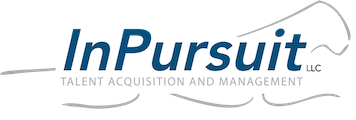The Future Workforce Series – Talent Acquisition – 4 of 6
In previous blogs in this series, we outlined recent workforce changes, critical issues with supply and demand, and the new employee mindset. We discussed how technology, communication and recruiting strategy play an integral role in successful talent acquisition and retention.
After months of working remotely, employees have drawn conclusions about their best work style. They now have distinct preferences and are determined to find a workplace culture that will accommodate their new priorities.
What does all this mean to the employer?
In this blog, we’ll discuss how to best understand the type of talent you need, attract that talent, strategically compete in the marketplace and retain your best employees. If any of those elements are missing in your strategy, you’re missing something very critical.
We want you to succeed with inspiration and purpose. Having a long history of success in the recruiting industry, we’ve seen abundant examples of both misfortune and victories. And from our daily conversations with employers and employees, we’ve gained clarity surrounding the shift that is taking place and how to manage it to a mutually beneficial outcome.
It starts with a forward-focused strategy.
Effective strategy requires annual planning. There are several layers within this model. This first layer provides the overarching goal, a serious look at the talent and skills required to get there, and an assessment of the current employee situation to find the gaps that would prevent you from achieving your goals.
As you set reasonable, yet achievable, goals during your strategic planning process, you’ll discuss company objectives in terms of growth, improvements, innovation, customer experience, finance and others. This broader intention is what will drive your activity and priorities for the year.
You will then define the steps needed to reach the goal and how the organization wants to complete each project. What are the insights, skills and experience needed to best complete the work? Once you know what you need to accomplish, an honest review of your employees will indicate where the gaps are on your current staff.
Knowing what expertise you will need, position profiles can be created. By making this an annual process, you give yourself the advantage of knowing exactly what you plan to do and who you need on the team to make it a reality. This is how your annual talent acquisition process begins.
Recruiting best practices make all the difference.
The second layer of the process includes the actual recruiting. Here’s where you find the person with the skills you need and the personality to favorably fit into your culture. Having the position profile ready prepares you for finding the ideal candidate for the role.
To be effective at this stage, you’ll look at active candidates and will likely find the best candidates in those who are curious but not actively looking. With open conversations about what’s important to them, we uncover their strengths and priorities. From there, we can discuss the opportunity and how it would satisfy their vision for the next step in their life and career.
Now more than ever, employees would like the freedom to work from home at least part of the time. It pays to determine how the future employee can be productive, and happy, in their new role.
Outpace the competition by taking action.
Because of today’s supply and demand issue, we need to take action—quickly. Waiting won’t get you where you want to go. With excellent planning, you will have a clear vision of what you need to reach your goals—and remember that your competitors may have a similar need for that level of expertise.
This is when you need to search far and wide for potential candidates, get to know them, and offer them an attractive package. You need to understand what’s most important to them—and what your competition might be offering. When ready to make an offer, you should know without a doubt that they would gladly accept the offer you have in mind. If not, you still have work to do.
What is your retention strategy?
The third layer involves all the ways you give your employees yet another reason to remain a productive player on the team. Keep your top performers by developing strong retention initiatives. Leaving it to chance is not a good strategy in these competitive times.
Meaningful incentives include promotions, bonuses and benefits. There are individual rewards for desired behaviors and outcomes and team incentives for getting you closer to the goal. Celebrate each benchmark that is reached.
Performance management will reward your employees appropriately. Just as important are the words of praise and appreciation, the interest in them and their family, and recognition among their peers. A handwritten note or gift card goes a long way for many.
The InPursuit Search Solution
More than anything, it’s imperative to define the right opportunity for the right employee. If that employee is not yet on your staff, with the right tools, you can locate the talent and hire to fill the gap.
Consistent communication plays an important role at every stage—within the team, with employees and with candidates. This is especially important in communications from management to employees and from HR to employees and candidates.
For optimal productivity, expectations must be communicated with a method of accountability that adds incentive rather than anxiety. There are a variety of performance management strategies. Choose one that meets the needs of your leadership and employees.
Engagement surveys, personalized programs and dashboards are helpful tools to understand and connect in a meaningful way. Employees thrive on connection. For executives and line managers, knowing your employees well will help you find the best approach.
In the next blog, we’ll discuss more about what employees want and solutions that will satisfy both the employer and the employee. If you would like to discuss today’s workforce and successful recruiting, call David Zimmel at InPursuit Search: 612-810-0406. And if you have a friend who would benefit from the discussion, please share the blog series with them. Thank you!


Write a Comment